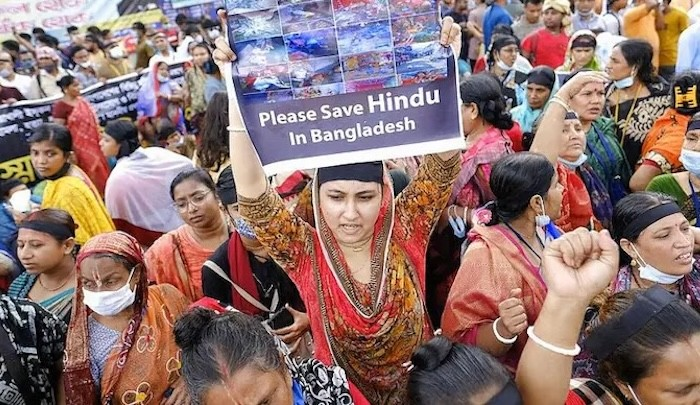Germany: Muslim migrant randomly stabs five people outside a bar
- Mahamunimodi Team
- May 22
- 4 min read

In the stillness of early morning, violence erupted in the heart of Bielefeld—a brutal and calculated assault that has stunned Germany and reignited fears of ideologically driven lone-wolf terrorism. This was not a chaotic bar fight nor a spontaneous outburst of aggression fueled by alcohol. Rather, all signs point toward something far more sinister: a premeditated, ideologically charged attack with a chilling degree of preparation.
It was just after 4:00 a.m. when the chaos began. Outside “Cutie,” a well-known nightlife hub in downtown Bielefeld, laughter and music filled the warm summer air. Young people gathered to unwind, unaware that terror lurked just meters away. Suddenly, screams pierced the atmosphere as a man lashed out with a knife—striking multiple patrons seemingly at random. Within seconds, blood stained the pavement. Witnesses recall not just a knife, but a second weapon—a sword cane—an archaic, almost theatrical instrument of violence more fitting for a bygone era than a modern European city. But there was nothing theatrical about the carnage left behind.
In the immediate aftermath, five people lay wounded—two in critical condition. The victims, aged between 23 and 27, were defenseless, targeted without provocation. For them, this wasn’t a bar brawl. This was a nightmare, unfolding in real time.
The perpetrator vanished into the night, but his intentions became clearer with what he left behind. A backpack was recovered—its contents deeply disturbing: a bottle containing flammable liquid, other weapons, and crucially, an official document bearing the name of a Syrian national. This was not a case of someone who stumbled into violence. He came prepared. He came with a plan.
As a result, investigators are treating this not as a mere criminal act, but as a targeted, possibly terror-motivated strike. The homicide division, internally dubbed “Elector,” has taken over the case, and the level of urgency is unmistakable. Police have activated a “BAO” or Besondere Aufbauorganisation—an elite task force assembled only in the most critical, high-risk cases. Such a designation implies that authorities suspect this incident may not exist in isolation. It hints at a motive rooted in extremist ideology, though whether religious or political remains unconfirmed.
What is clear is that this was an attempted act of mass violence. The presence of a flammable liquid indicates that the knife attack may have been only the beginning. One can only imagine the scale of destruction had the attacker not been confronted by brave bar patrons—who, according to police, may have saved many lives by tackling the assailant and inadvertently causing him to abandon his weapon-filled backpack.
The implications extend far beyond Bielefeld. This attack has torn a hole in the fabric of urban life, shaking the collective sense of safety. If people cannot feel secure while socializing in city centers, what remains of public trust? The image of a lone individual moving through a crowd with concealed weapons and arson materials is both horrifying and emblematic of a disturbing trend.
Across Europe—and particularly in Germany—authorities have warned for years about the growing threat posed by radicalized individuals who act alone, often inspired by extremist propaganda found online. These so-called “lone wolves” don’t need formal affiliations with terrorist networks to cause devastation. They often bypass surveillance systems, making their actions harder to predict—and harder to prevent.
German intelligence services have been on heightened alert for months, pointing to an increased risk of attacks motivated by Islamist, anti-Semitic, or anti-Western ideologies. This decentralized form of terror relies on surprise, improvisation, and the power of symbolism. It turns everyday places into battlegrounds: bars, train stations, schools, churches, and markets.
The fact that a Syrian residence permit was discovered will undoubtedly feed into ongoing debates around migration, integration, and national security. While it is important to avoid collective blame, it is equally crucial to confront uncomfortable truths. Some sectors of the political spectrum have long criticized what they see as the government’s failure to adequately vet or monitor asylum seekers and migrants who might harbor extremist views. On the other hand, the vast majority of refugees and immigrants seek peace and security. Conflating isolated acts with an entire community risks deepening social fractures—and playing into the very narratives extremists thrive on.
Still, this incident exposes a systemic issue: the frequent downplaying of warning signs related to radicalization. Whether in prisons, schools, refugee shelters, or online forums, individuals sometimes display alarming behavior that goes unchecked. The result is a society caught off guard—again and again—by tragedies that, in retrospect, showed early signs.
In this case, investigators must determine: Who is this man? What led him down this path? Was he part of a network, or acting entirely on his own? Was the attack ideologically motivated—or a deeply disturbed expression of personal grievance? Did anyone help him prepare? Did he leave behind a manifesto, digital footprint, or social media trail?
The manhunt continues, and authorities are urging the public to avoid engaging with the suspect directly, warning that he is considered armed and dangerous. The priority is now to capture him before he can harm anyone else—or disappear entirely.
Regardless of what further details emerge, the attack in Bielefeld marks a grim chapter in Germany’s ongoing struggle with domestic terrorism and extremist violence. It is a sobering reminder that modern terror does not always come in large-scale plots or coordinated attacks. Sometimes, it walks quietly into a bar with a blade hidden inside a walking stick.
For now, Bielefeld mourns—and Germany watches, with unease, as investigators race to understand a threat that has already struck at the nation’s sense of peace.



Comments